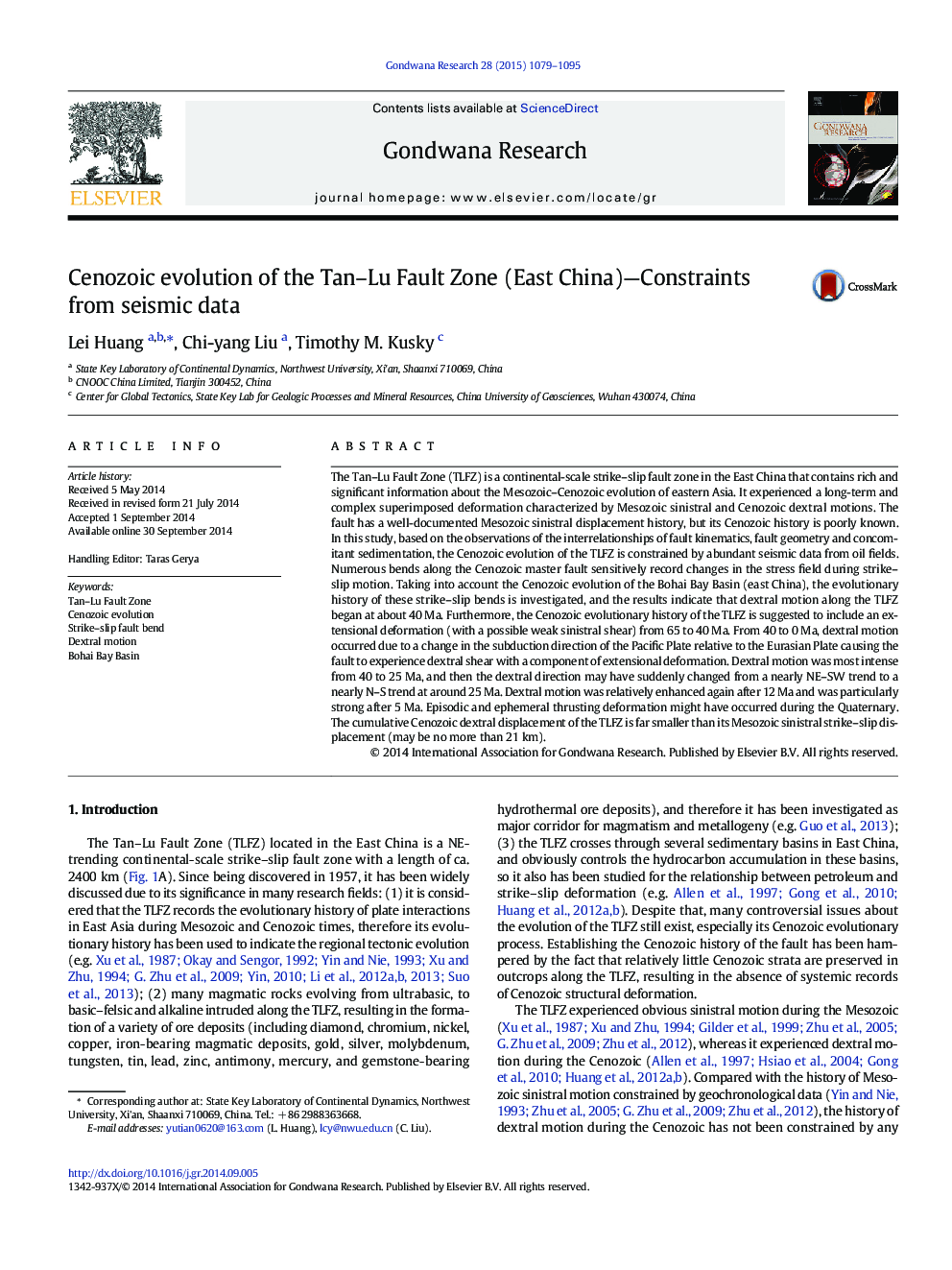| کد مقاله | کد نشریه | سال انتشار | مقاله انگلیسی | نسخه تمام متن |
|---|---|---|---|---|
| 4726726 | 1356344 | 2015 | 17 صفحه PDF | دانلود رایگان |
• Strike–slip bends in the TLFZ record the variety of tectonic regime sensitively.
• Dextral motion of the TLFZ commenced at about 40 Ma.
• Variety of plate boundary conditions controlled Cenozoic evolution of the TLFZ.
The Tan–Lu Fault Zone (TLFZ) is a continental-scale strike–slip fault zone in the East China that contains rich and significant information about the Mesozoic–Cenozoic evolution of eastern Asia. It experienced a long-term and complex superimposed deformation characterized by Mesozoic sinistral and Cenozoic dextral motions. The fault has a well-documented Mesozoic sinistral displacement history, but its Cenozoic history is poorly known. In this study, based on the observations of the interrelationships of fault kinematics, fault geometry and concomitant sedimentation, the Cenozoic evolution of the TLFZ is constrained by abundant seismic data from oil fields. Numerous bends along the Cenozoic master fault sensitively record changes in the stress field during strike–slip motion. Taking into account the Cenozoic evolution of the Bohai Bay Basin (east China), the evolutionary history of these strike–slip bends is investigated, and the results indicate that dextral motion along the TLFZ began at about 40 Ma. Furthermore, the Cenozoic evolutionary history of the TLFZ is suggested to include an extensional deformation (with a possible weak sinistral shear) from 65 to 40 Ma. From 40 to 0 Ma, dextral motion occurred due to a change in the subduction direction of the Pacific Plate relative to the Eurasian Plate causing the fault to experience dextral shear with a component of extensional deformation. Dextral motion was most intense from 40 to 25 Ma, and then the dextral direction may have suddenly changed from a nearly NE–SW trend to a nearly N–S trend at around 25 Ma. Dextral motion was relatively enhanced again after 12 Ma and was particularly strong after 5 Ma. Episodic and ephemeral thrusting deformation might have occurred during the Quaternary. The cumulative Cenozoic dextral displacement of the TLFZ is far smaller than its Mesozoic sinistral strike–slip displacement (may be no more than 21 km).
Figure optionsDownload as PowerPoint slide
Journal: Gondwana Research - Volume 28, Issue 3, October 2015, Pages 1079–1095
